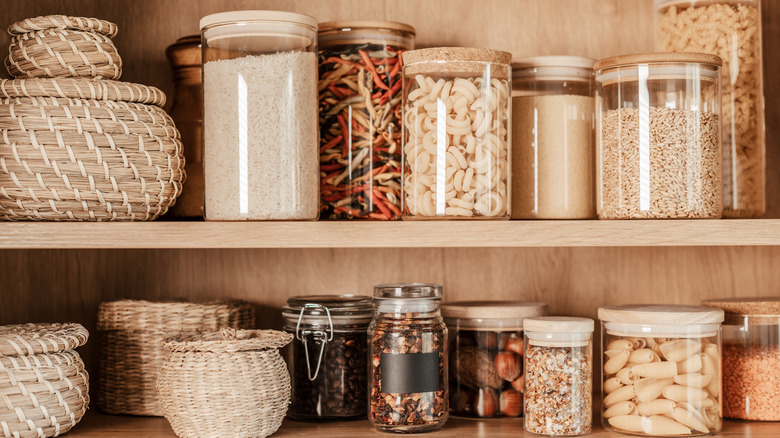The One Ingredient That Shouldn't Be In The Pasta You're Eating
Everyone loves pasta. It's a cheap, filling food that is a staple in many homes around the world. Every year, Americans eat roughly 20 pounds of pasta, collectively consuming almost 6 billion pounds, according to Share the Pasta. In fact, the United States is the fifth-largest consumer of pasta anywhere in the world, according to FSR Magazine. Despite our love of the descendant of Asian noodles (per PBS), not everything is perfect about pasta.
In the United States, pasta is made by mixing milled wheat — a process of blending, grinding, and sifting the grain (per the North American Millers Association). Water, eggs, and other ingredients are then shaped into the desired type of pasta before being dried and packaged, according to the U.S. Environmental Protection Agency. However, it's those "optional ingredients" that cause trouble, as there is one ingredient that you may not want to see in your boxed pasta.
Azodicarbonamide may lead to respiratory issues and increased cancer risk
Azodicarbonamide (ADA) has had a controversial history. The chemical is used commercially as a blowing agent for rubbers and plastics, a bleaching agent in certain flours, and to improve the strength and texture of dough, according to the American Cancer Society. The chemical does not have the best reputation, with some studies suggesting a link between consuming and inhaling ADA and breathing issues. When baked, the additive has also been linked to causing cancer in lab rats, although the World Health Organization says this has not been extensively studied.
This being said, you may want to take ADA's reputation with a grain of salt. The U.S. Food & Drug Administration (FDA) has approved the use of the chemical as a food additive, calling it safe and not recommending people to change their diets to avoid ADA. While high levels of ADA did increase the presence of tumors in female mice (per the FDA), the level consumed was far higher than the average exposure to ADA in a normal diet. This hasn't stopped some countries, including India, China, Brazil, and the U.K. from banning the ingredient, according to The Guardian.


